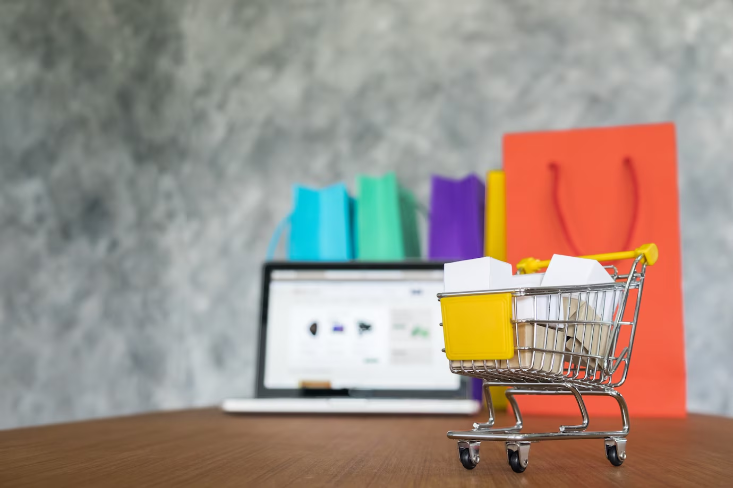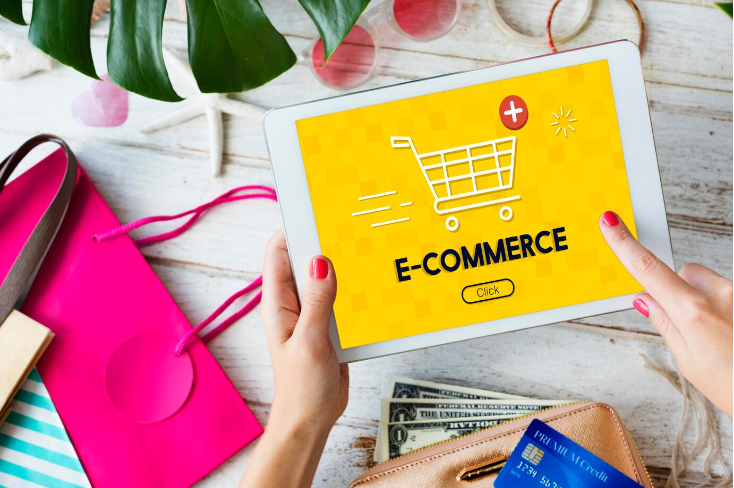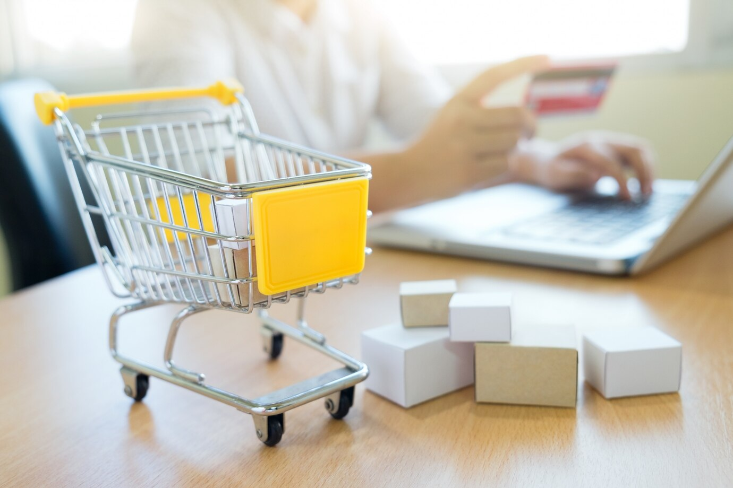Table of Contents
Get Custom eCommerce Fulfillment Service
Book a Meeting
2025 eCommerce Peak Season Guide: Dates, Trends & Winning Strategies
Time: Jul 17,2025 Author: SFC Source: www.sendfromchina.com
The 2025 eCommerce peak season is fast approaching—and with it comes a high-stakes opportunity. From Prime Day in July through Cyber Week and the December holidays, retailers are gearing up for a dramatic upswing in traffic, sales, and competition. Seasonal SEO isn’t just optional—it’s essential. Brands that wait until late autumn risk scrambling while competitors seize search visibility earlier.In this guide, we’ll walk you through the full roadmap—from a dynamic peak season calendar to consumer behavior trends, actionable strategies, and post-peak opportunities tailored for SendFromChina. You’ll learn how to forecast demand, optimize listings with the right keywords, streamline logistics, and harness the latest trends like mobile-first shopping, social commerce, and eco-friendly fulfillment. By planning early—3 to 6 months ahead—you give your store the agility and authority needed to lead the pack.
Ready to turn seasonal surges into sustained growth? Let’s dive into the dates, trends, and tactics that will define… Peak Season 2025.

1. Peak Season Calendar: Key Dates to Mark
Success hinges on aligning operations with global shopping events. The 2025 calendar blends established Western holidays with surging Asian shopping festivals:Event |
Date(s) | Significance |
|---|---|---|
| Prime Day | July 8–11, 2025 | Amazon's largest summer event—4 days, record spending (~$24 billion) |
Back-to-School |
Aug-Sept 2025 | Rising demand in electronics, stationery |
| Prime Big Deal Days | Mid-Oct (14–15) 2025 |
"Second Prime Day" warm-up before Cyber Week |
Halloween |
Oct 31 | Early seasonal promos |
Singles' Day |
Nov 11 | China-rooted global boom |
Black Friday |
Nov 28, 2025 | Peak eCommerce surge |
Small Business Saturday |
Nov 29 | |
Cyber Monday |
Dec 1 | |
Cyber Week |
Dec 1–7 | |
Christmas |
Dec 25 | |
Post-Holiday |
Jan 2026 | Gift card redemptions & returns |
Start planning 3–6 months ahead, especially inventory, ads, and logistics—Q4 begins in earnest by October.
Critical Notes:
- Prime Day’s Global Ripple: July’s Prime Day now rivals Black Friday, with 2024 sales volumes exceeding Japan’s population. Expect 110–115% revenue surges for sellers.
- Niche Festivals Matter: Diwali (Oct 20) and Lunar New Year (Jan 29, 2026) drive 55%+ cross-border purchases in their regions.
- Prolonged Seasons: 58% of Australians now defer purchases until sales events—plan for extended promotions around key dates.
2. Consumer Behavior Shaping 2025 Peak Season

Strong Confidence Prepping Festive Surge
The mid-year 2025 eCommerce spike—driven in part by Prime Day—signals bullish consumer sentiment: overall eCommerce order volumes climbed ~19% year-on-year, setting the stage for a powerful rest of the year. The underscores shoppers’ growing comfort with online spending, even amid economic uncertainty.Prime Day & Deal Dynamics
During Amazon’s record-setting four-day Prime Day in July, U.S. consumers shelled out approximately $24 billion—twice the average Black Friday spending. Notably, many purchases were value-driven: two-thirds of low-priced items (under $20), with consumers prolonging decisions earlier in the week and savvy on cross-retail comparisons.Tier‑2 & Emerging Markets Growth
Global expansion continues—eCommerce firms have significantly increased marketing and inventory for smaller urban areas, especially in India’s tier‑2 and tier‑3 cities, recognizing rising digital adoption and consumer demand in 2025.Budget-Conscious & Value-Driven
Shoppers in 2025 remain price-sensitive: studies show strong holiday spending growth, yet anchored in discounts, smart comparison-shopping, and flexible payment methods like BNPL. Consumers are streaming purchases through generative AI deal-finders and balancing cost-savings with desire.Mobile & AI-Driven Transactions
Mobile continues to dominate: nearly 79% of last‑minute holiday purchases occurred via smartphones. AI-powered bots and chat tools—used 42% more than last year—are significantly influencing purchases, lifting overall sales by ~$229 billion globally during holiday 2024.Social & Conversational Commerce
In 2025, social platforms are no longer just discovery—42% of U.S. internet users have recently shopped via social media, and almost 13% completed holiday purchases directly within apps. Platforms like TikTok and Instagram are key vehicles for influencer-led commerce, live shopping, and in-app checkout, offering high engagement and strong conversion rates.Sustainability Remains Important
Beyond speed and savings, nearly 80% of shoppers are still happy to wait longer for eco-friendly shipping options. The trend ties into broader ethics-driven buying behaviors, including preferences for recycled packaging, carbon offset messaging, and brand transparency.Trust & Review Culture
In a climate of fake reviews and online scams, consumers are leaning on trusted communities—Reddit, Substack—and genuine user-generated content to guide their choices. Influencers retain power: 88% of consumers will act on recommendation via social posts.3. Strategic Playbook: 2025 Tactics for Success
Armed with dates and trends, here’s how to leverage the season:
Preparation & Forecasting (Q3–Q4 Begin Now)
- AI-Powered Demand Forecasting: Move beyond last-year's trends. Use machine learning to factor in social mentions, weather shifts, and macroeconomic indicators. These predictive models can alert you to surging demand or potential slowdowns early.- Scenario Planning: Map out best, base, and worst cases. If a competitor drops prices unexpectedly or a shipping delay hits Asia–U.S. lanes, you’ll be ready to pivot on promotions or logistics.
- Cross-Channel Data Sync: Aggregate analytics from marketplaces, social platforms, and direct-to-consumer storefronts for a unified view—crucial to minimize channel conflict and overspending.
Inventory & Product Strategy
- SKU Rationalization: Allocate inventory based on margin and velocity forecasts—fewer SKUs with more depth avoids stockouts and dilutes logistic costs.- Bundling & Modular Offers: Combine slow-moving items with fast-sellers—boost average order value while clearing lower-demand inventory.
- JIT Replenishment with IoT/RFID: Real-time tracking flags low inventory across fulfillment centers, enabling auto-reorders before stockouts hit.
Promotions & Pricing—Dynamic by Design
- Time-Sensitive & Tiered Offers: Launch early-bird deals 90 days before the main events; follow with deeper discounts as dates approach.- Dynamic Pricing Engines: Leverage algorithms that adjust prices based on competitor activity, stock levels, and consumer browsing behavior.
- Real-Time Couponing via ML: Implement smart coupon allocation that calculates optimal discount value in milliseconds to maximize conversion without over-discounting.
User Experience & Checkout Optimization
- Mobile-First Checkout Design: With over 79% of purchases via smartphones during peak 2024, frictionless mobile UX is table stakes.- Conversational Commerce: Scale support with AI chatbots—Salesforce reports a 42% jump in bot usage. Chat can impact $229 billion in holiday sales.
- Personalized Upsells: Use AI to surface complementary products at checkout—ex: “Customers also bought...” powered by real-time data.
Logistics & Fulfillment—Speed & Scalability
- AI-Powered Last-Mile Optimization: Companies like Veho and Amazon use AI to optimize delivery routes in real-time—cutting cost, improving speed, and reducing customer support calls.- 3PL (Third-Party Logistics) & Micro-Fulfillment Partnerships: Work with regional 3PLs near customer hubs to reduce transit time and cost (turn0search2, turn0search5).
- Multi-Carrier Backup Plans: Ensure failover options—UPS, DHL, local couriers—are ready if one network saturates or spikes.
- Eco-Conscious Delivery Choices: Offer longer-window "green" shipping with carbon offsets; 78% of shoppers say this influences purchase.
Customer Service & Return Management
- Proactive Support Scaling: Prepare chat, email, and hotline staffing ahead of volume peaks; scripted bot handoffs can alleviate pressure.- Smart Returns Handling: Offer prepaid labels and self-serve portals; use AI to flag suspicious returns.
- Post-Purchase Retention Tactics: Follow returns with next-best-offer emails (e.g., “Still interested? Here's 10% off”), turning returns into repeat buys.
Advertising, Social & Influencer Strategy
- Phased Campaign Roll-Out:Pre-Season Tease (90 days out): Build email/social anticipation.
Early Access Flash Sales (60 days out): Engages loyal customers and VIP shoppers.
Full-Scale Blitz (30 days to peak): High-budget ads, dynamic retargeting, urgency messaging.
- Multi-Platform Engagement: Diversify presence across TikTok, Instagram, YouTube—companies see 2–5% higher web sales when active on multiple platforms.
- Live Selling & Influencer Partnerships: Use livestream product demos with affiliate links—boosts trust and encourages impulse buys.
4. Trend-Driven Strategic Synopsis
Based on comprehensive analysis of industry forecasts and behavioral data, here’s an expanded strategic synopsis of the five defining trends for 2025 peak season, enriched with actionable frameworks and regional nuances:
AI-Powered Personalization & Conversational UX
- 24/7 AI Concierge: Generative AI and smart assistants—like Amazon’s Rufus—are supporting autonomous shopping guidance, cart recommendations, and intelligent upsells.- Chat, Voice & AR: Conversational interfaces (chatbots, voice assistants) combined with AR/VR virtual try-ons elevate mobile and social shopping experiences.
Mobile-First & Q-Commerce
- Mobile as Main Channel: With ~79% of peak holiday purchases through smartphones, PWAs, one-click wallets, and image-based search are critical.- Quick Commerce Edge: On-demand delivery within 1 hour (q-commerce) is evolving as a post-sale advantage, though cost remains a balancing factor.
Social Commerce & Influencer Amplification
- Integrated Sales & Discovery: Social platforms will drive ~70% of eCommerce by 2030, turning content into commerce via livestreams and influencer hubs.- Marketplaces Going Social: Etsy and eBay are pivoting to algorithmic, social-like feeds to boost discovery and engagement.
Sustainability & Ethical Alignment
- Eco-Conscious Expectations: 70%+ of shoppers expect transparent carbon reporting; sustainable packaging, carbon-offset delivery, and circular economy options are becoming table stakes.- Ethical AI: Balancing personalization with data privacy—via encryption, bias audits, and transparency—is essential to maintain trust.
Logistics & Fulfillment Innovation
- AI-Powered Last-Mile: AI-route optimization can slice delivery issues and costs that represent ~41% of logistics spend.- Micro-Fulfillment & Carrier Shifts: Regional fulfillment hubs and backup carrier options ensure reliability during peak shipping loads.
Omnichannel & Composable Commerce
- Seamless Journeys: Consumers expect fluid transitions across mobile, desktop, in-store, and social—with consistent inventory, messaging, and returns.- Composable Flexibility: Modular storefronts integrating search, payment, and chat capabilities let retailers adapt quickly to emerging trends.
5. Post-Peak Opportunities
The end of the peak season doesn’t mean the end of revenue—it’s a launchpad for sustained growth. Smart sellers capitalize on post-peak opportunities to recover costs, retain customers, and prepare for the next wave of demand. Here’s how to maximize this critical period:Post-Holiday Sales: Riding the Extended Wave
The first week of January consistently shows high engagement—site visits and open rates surge, creating optimal timing for post-holiday offers and clearance events. According to Networksolutions, targeted tiered discounts, flash sales, and loyalty incentives during January 2–7 can help maintain sales velocity while clearing excess inventory.A tailored checklist:
- Tiered Discounts (e.g., 10% off $50+, 20% off $100+)
- Flash Sales with countdown timers
- Bundles packaging slow-moving SKUs with popular items
- Loyalty-Exclusive Offers to reward repeat customers
- Email & SMS Retargeting for holiday purchasers
- Interactive Social Promotions (e.g., follower polls)
Data Analytics & Logistics Optimization
Peak-season operations produce a trove of data—order timing, delivery bottlenecks, return patterns. Parcel Perform advises using AI to analyze this information, optimize delivery estimates, identify fraud in returns, and streamline checkout with real-time widgets—strengthening logistics and customer experience in future peaks.RetailBiz highlights how performance gaps—such as only 42% successful delivery fulfilment—must be addressed through system consolidation and data-driven upgrades.
Refining Supply Chain & Fulfillment
Post-peak is ideal for reviewing your warehousing strategy. Peak-season surveys indicate 58% of retailers failed to meet delivery accuracy expectations, signalling a systemic need for WMS and OMS integration.Invest in micro‑fulfillment nodes and multi-carrier backups to beat seasonal bottlenecks. Data-savvy operations gain customer loyalty and margin stability.
Customer Lifecycle & Loyalty Expansion
The lucrative period after Q4 offers a key chance to convert one-time buyers into lifelong fans. MakroAgency suggests integrating post-peak CRM workflows—welcome series, personalized product recommendations, loyalty rewards, and onboarding sequences tailored to holiday shoppers.Emails, social follow-ups, and on-site retargeting help keep your brand top-of-mind—even when budgets tighten.
Inventory Liquidation & Marketplace Clearing
Overstock clearance reduces carrying costs and makes room for Q2 products. Use bundles, discounted flash deals, and bundled shipping offers to move inventory fast. Networksolutions highlights that well-executed flash sales and bundle deals can spark meaningful January revenue.Scheduling Around Secondary Shopping Moments
Capitalize on 2025’s early events—New Year, Valentine’s Day, Easter, Back-to-School, and regional festivals. Post-holiday audience segmentation and planning based on live data can boost engagement without the clutter of major peak periods.Continuous Sustainability and Brand Trust
Peak season learnings reveal: early expectations on delivery are high, and failures can hurt loyalty. Use post-peak data to improve transparent eco-friendly options like carbon-offset delivery and greener packaging—this builds long-term brand equity.6. Tips for SendFromChina Experts
Leverage SFC’s infrastructure to bypass cross-border pain points:Leverage Chinese festival seasons – align product sourcing with Golden Week and Singles’ Day promotions to maintain inventory freshness.
Integrate supplier forecasting – share your demand data with suppliers early; plan buffer stock into shipments.
Accelerate shipping promotions – secure peak season shipping slots in Q3 and Q4, aim for combined container loads.
Showcase factory-direct value – highlight cost savings, origin detail, manufacturing reliability.
Eco-shipping message – offer slower, eco-smart routes alongside DHL/UPS premium.
Optimized packaging – focus on light, branded, recyclable materials to reduce cost and carbon footprint.
Trade-event timing – pre-peak sourcing during China Canton Fair and others ensures supply chain agility.
Localized support – provide multilingual package tracking and after-sales chat (WeChat, WhatsApp, Email).
7. Conclusion
2025’s peak eCommerce season is an orchestration of AI-driven insights, social and mobile first designs, logistics excellence, and eco-smart messaging—all wrapped in a value-first package. For SendFromChina, the game is sourcing—which you excel at—and turning supply-chain capability into recognized customer advantage. Begin planning early, optimize across tech and operations, lean into consumer trends and sustainability, and you’ll convert seasonal spikes into long-term growth.8. FAQs
When is Prime Day 2025?
July 8–11, 2025 (extended to 4 days).Which event drives highest sales?
Prime Day (~$24B), Black Friday, and Cyber Monday lead Q3–Q4 peaks.How early to prep?
Begin planning 3–6 months ahead, especially by July and August for inventory.Is social commerce worth it?
Absolutely—social checkout skyrocketed: +65% search growth, and 20% of holiday sales through social channels.How to balance speed vs green shipping?
Offer both. Let customers choose—fast express or eco slower routes (with gentle discount and eco message). Post Views:2421
Post Views:2421
Copyright statement: The copyright of this article belongs to the original author. Please indicate the source for reprinting.
Previous Post
What Is Product Sourcing and How to Sourcing Product for Your Business
Next Post
TAGS
Hot Research
Recent News
- Third Party Logistics Definition, Process, and Advantages
- What Is Ecommerce Fulfillment? The Definition, Process, and Benefits
- Where Does Shein Ship From
- China to USA Shipping Methods Explained: Delivery Times, Costs, and Best Options
- Paperless Picking: The Complete Guide for Faster, Smarter Fulfillment
Get Custom eCommerce Fulfillment Service
Book a Meeting
Get a Custom China Fulfillment Solution with FREE Storage for 30 Days
 Want to know about our services, fees or receive a custom quote?
Want to know about our services, fees or receive a custom quote?
 Please fill out the form on the right and we will get back to you within a business day.
Please fill out the form on the right and we will get back to you within a business day.
 The more information you provide, the better our initial response
will be.
The more information you provide, the better our initial response
will be.





 TAGS:
TAGS: